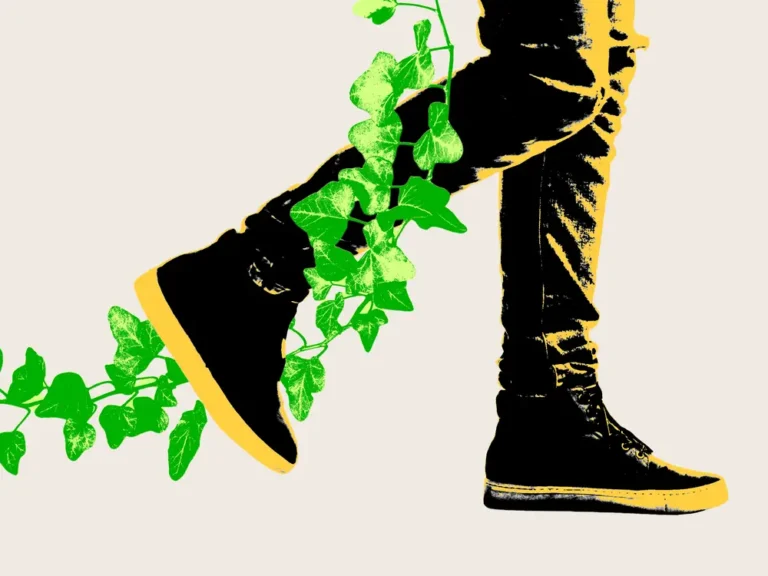Some Gen Z and baby boomers are facing a strange predicament: feeling happy and lonely at the same time

- Recent studies have found that happiness and loneliness follow a U-shape throughout adults’ lives.
- Happiness and loneliness both peak early and later in life, with a decline during middle age.
- BI spoke to adults who’ve been lonely and happy at the same time — and researchers who explain how that works.
Harry Samtur, 73, has a laundry list of activities to fill his time.
He takes classes through a program for adults over 50, is part of a biking group, participates in a book club, belongs to a synagogue, and is also an artist, with a show coming up in just a few weeks.
Those activities have been “totally essential” for his well-being, the Minnesota resident said.
“It’s great, but it takes an effort,” Samtur told Business Insider. “It’s something that’s very important that I do, and it brings me a lot of joy.”
However, Samtur said he still finds himself experiencing loneliness from time to time. Living alone and far from his family, he said he doesn’t have the close connections he had growing up, and even though he tries to fill his time with hobbies and social events, feelings of loneliness still emerge.
“When people have families, they have their loyalties to their families, and they’re very busy with their families. So when you’re alone, you don’t always have people to do things with. So loneliness does come up,” Samtur said.
An April paper published in the Psychological Science journal highlighted Samtur’s exact predicament. According to the paper, loneliness follows a U-shaped curve throughout life— it’s higher in younger and older adulthood and lowest during middle age.
Perhaps counterintuitively, happiness tends to follow the same pattern. That means that right now, Gen Z and baby boomers, in particular, might be experiencing a strange juxtaposition: They’re happy and lonely at the same time.
Why it’s possible to feel happy and lonely at the same time
Happiness and loneliness are “complex emotional experiences that are not mutually exclusive,” Eileen Graham, a coauthor of the loneliness study and associate professor of medical social sciences at Northwestern University, told BI. Graham’s work was conducted before the pandemic and examined over 120,000 participants from nine different countries, including the US, Germany, and Australia.
“You can experience both at the same time, and especially during midlife, that’s an emotionally complex time, and people have a lot going on,” Graham said. “So people feel maybe a little less happy with their lives in midlife, but it doesn’t mean you’re also feeling lonely.”
Happiness and loneliness can evolve over one’s life — and it can impact anyone, anywhere, as the study found.
“Overall, people tended to be more lonely, just persistently lonely, if they had less education, had lower income, and poor health,” Graham said.
“And that can help us understand as people enter into older adulthood and are typically just, on average, becoming more lonely anyways, people with certain health conditions or from different socio-economic backgrounds might be even more at risk,” she said.
Samtur said that even with the joy he finds from his activities, he knows how detrimental loneliness can be and how hard it is to overcome.
“There’s so much polarity, and it’s sometimes hard to deal with people, and then you just want to stay home and hide in a corner,” Samtur said. “And I know people who do that, but in the end, we’re social beings, and we need to have that interaction and go through the difficult experiences with others in order to find the good ones.”
‘I could be in a room full of people who love me and still feel super lonely’
Donna Basztura, 58, has experienced waves of happiness and loneliness throughout her life. A teenage mom, she experienced joy from her partner and child, but loneliness persisted, as most of her peers were not at the same stage of life.
As Basztura got older, her experiences with loneliness shifted — she had five more kids she raised on her own, and her life is now full with her children and grandchildren. But after moving to Florida four years ago, she’s found herself facing a persistent dilemma: she attends every event she’s invited to, and she finds joy in being with others, but there’s a feeling of loneliness that she just can’t shake.
“I could be in a room full of people that love me and still feel super lonely because everyone has someone, their husband, their wife, and that’s wonderful. That’s what we strive to do for our legacy to leave behind,” Basztura told BI. “But then you’re still so lonely. I never act like I am. I’m so bubbly. I’m the life of the party. I make sure I’m having fun, but it’s just that emptiness and loneliness feeling that really, really devastates a person.”
As Samtur and Basztura’s experiences illustrate, having social interactions isn’t enough to absolve feelings of loneliness. Graham said that social isolation and loneliness “are very different constructs” — the former is measured by how often and how many people someone interacts with within a set period of time, whereas the latter is “an emotional distress” when a person isn’t getting what they need out of their social connections.
Balancing loneliness and happiness is an issue researchers are studying. In March, Gallup — in partnership with other organizations — released the 2024 World Happiness Report, and for the first time since the report began over a decade ago, the US dropped out of the top 20 happiest countries.
The happiness report found that social support — meaning positive interactions with neighbors, community groups, or friends and family — and loneliness both affect happiness, and “social interactions of all kinds also add to happiness, in addition to their effects flowing through increases in social support and reductions in loneliness,” it said.
“Weak ties,” which are small connections people make with others they might not know very well — say, an acquaintance at your gardening club or a barista at your regular coffee shop — can contribute to feelings of happiness but don’t necessarily help cure loneliness. However, a 2014 study found that weak ties do have major benefits, helping people feel happier with a boosted sense of belonging.
Basztura wants more than just the weak ties she has in Florida; she’s happiest when she’s surrounded by loved ones and those who know her very well, like her family. Though she’s recently met a man who she enjoys spending time with, she finds herself alone throughout the day due to his work schedule. On top of that, she said a few of her close friends died during the pandemic, so she’s lacking female friendships that played a significant role in boosting her happiness throughout her life.
“It’s tough when you don’t have an actual partner that you can rely on at our age and have gone through the things in life we’ve gone through in the era we were raised in. And you’re just going forward. You’re flying by the night pretty much by yourself,” Batszura said. “And that emotion, it’s really deep. It’s really deep. I hide it well, but it’s deep.”
She made an effort to join clubs focused on fitness, like hiking or kayaking, but even surrounded by people, she didn’t quite feel the connections she was hoping for.
“I could find enjoyment, I could find happiness, in swimming, camping, whatever,” she said. “But again, I’m camping by myself. So the loneliness is absolutely still there.”
‘You have to solve it and figure out the best way for you’
We have previously reported on how people across different generations experience loneliness. Over a third of Americans aged 18 to 25 reported feeling lonely in a December 2023 survey conducted by the Harvard Graduate School of Education.
Some Gen Zers pay for social connections through activities like fitness memberships. One 24-year-old previously said that he spends over $200 a month for memberships at rock-climbing and jujitsu gyms because “if you pay for something, you’ll show up to it.”
“These types of activities ease the process of making friends more so than free activities because they tend to be more structured,” he said. “Basically, you’re stuck together with everyone else there and forced into new social situations.”
Other Gen Zers have used the return-to-office as a way to facilitate connections and counter loneliness. A 23-year-old said that even though she was in “constant communication” with her coworkers, the online work environment meant that she “didn’t actually have people around me who were willing and able to chat and talk and help.”
Preeti Malani, a professor of medicine at the University of Michigan, previously said that “being lonely as an 80-year-old may be due to a very different reason than someone who is a 19-year-old college student living amongst a huge group of people.”
“You can be surrounded by people and be lonely,” she said. “And that college experience or high school experience is a good example where you don’t have the meaningful connections with people.”
Meanwhile, older adults have turned to apps like Nextdoor and groups at local senior centers to make connections in their areas.
While people of all ages are working to make friends and combat loneliness, Graham said, the problem could be easier to solve at a younger age. That’s because a lot of the reasons for loneliness when people are younger, like moving out of their parent’s home and trying to build a new social network, are steps that will set up a foundation for later in life.
“I don’t necessarily think that loneliness is bad in younger adulthood as long as it’s not chronic and doesn’t begin to naturally mitigate itself,” Graham said.
But for older people, loneliness can be sparked by loved ones dying or social networks moving away, and it’s harder for them to stay engaged after facing those losses. Joan Hendrix, 80, can attest. She told BI that after her husband died 10 years ago, she “could not function” due to her grief and the loss of companionship, and while she sought out professional help, she felt that she couldn’t burden her loved ones with her feelings of loneliness.
She said that for about four years, she couldn’t bring herself to go out and meet new people — that is until she looked out her window one day and saw weeds in her flower garden.
“So I said, ‘Oh, I’ve got to go weed.’ And so one day, I just went out and started weeding, and each day after that, I seemed to be able to move and do more things,” Hendrix said.
Hendrix said she gradually became more comfortable reaching out to her friends and reestablishing relationships, as well as making new ones through various groups and volunteer opportunities. There are still moments when Hendrix feels lonely, but the overarching emotion she now experiences is joy.
“You learn to cope, and then after a while, you still might struggle, but you’re able to cope with it, and you go along, and you do things that you need to do to get better and be happy again,” she said.
Hendrix said that recognizing that she was facing both happiness and loneliness is what pushed her to seek help and make connections.
“You have to do a lot of work on your own to get better,” Hendrix said. “Nobody can solve it for you. You have to solve it and figure out the best way for you.”






